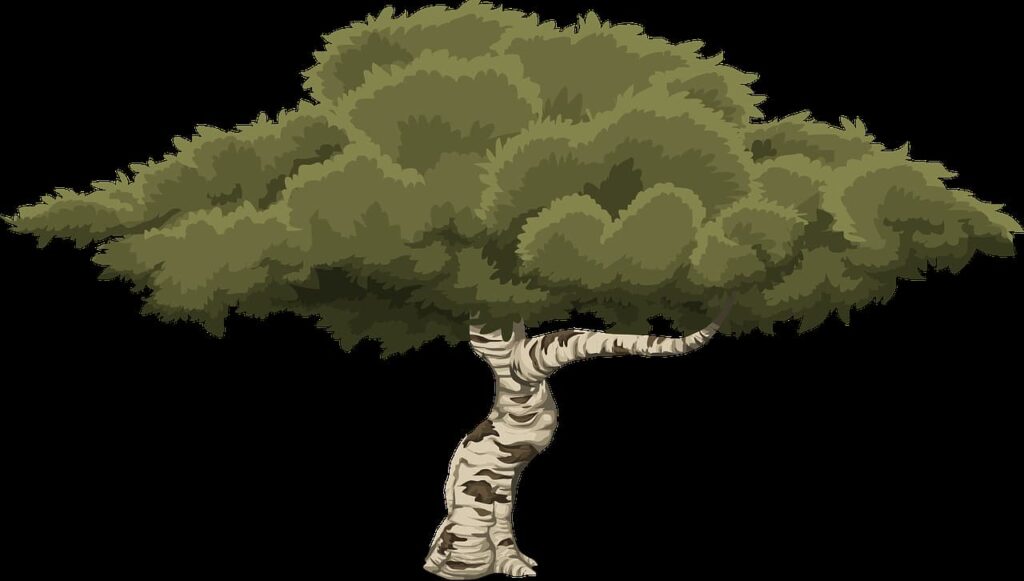
The tropism (both positive and negative), refers to the growth or change of development direction of an organism and especially of a plant or plant, in response to a specific environmental stimulus.
If the organism moves in favor of the stimulus, it will speak of positive tropism. If, on the other hand, it does it in the opposite direction, it will speak of negative tropism. For example: positive hydrotropism, negative phototropism.
Types of tropism
We already know that a tropism will be positive or negative according to its orientation for or against the environmental stimulus considered. However, there are several types of tropisms according to the very nature of the stimulus, namely:
- Phototropism. It is the reaction of plants with respect to sunlight, necessary to carry out their photosynthesis processes.
- Geotropism. It implies the orientation with respect to the axis of gravity of the earth, which allows the roots to be oriented towards the ground and the stems in the opposite direction. It is essential during the germination stage.
- Hydrotropism. Another essential element for their subsistence, water, is an environmental factor that greatly influences the tropisms of plants, especially large trees in urban contexts.
- Thigmotropism. It is the reaction in contact with a solid. Many plants tend to grow around them, in some cases surrounding them and in others encompassing them.
- Chemotropism. Similar to hydrotropism, but referring to the chemical substances present in the soil or the environment in which the plant grows. If it is favorable, the roots and even the stem will grow in its direction, but if not, they will grow in the opposite direction.
- Aerotropism. Growth in relation to the presence or absence of air and free or more ventilated spaces.
Difference between nastic movements and tropisms
Tropisms, which are sustained reactions to permanent stimuli, should not be confused with nastic movements, which are also movements of plant organisms, but focused on specific organs and ephemeral and diffuse character. The latter are active and reversible movements, the tropisms, on the other hand, are not, since they imply the definitive form of the organism.
An example of nastic movement are the sleepy plants (Mimosa pudica), which close their leaves when touched, to avoid being damaged.
Examples of positive tropism
- Positive hydrotropism. Ficus are notorious for migrating their roots to water sources, lifting the pavement off streets and breaking pipes in the process, so planting them near houses is not recommended.
- Positive phototropism. Sunflowers are known for their ability to literally turn to face the sun. That way they guarantee constant access to the sunlight they need. According to some experts, however, since it is not a form of growth, it would not be phototropism as such.
- Positive geotropism. No matter how we sow a seed, the roots will always go according to the force of gravity, as this way the plant ensures that they go to the ground and receive the necessary nutrients to continue their growth process.
- Positive thigmotropism. Vines and climbing plants react to the presence of solid objects by growing around them and expanding on their surface. This means that many can literally suffocate others, robbing them of light and COtwo what do you need.
- Positive aerotropism. The plant known as the “bad mother”, “spider” or “tie of love” (Chlorophytum comosum), a frequent indoor plant, seeks the airy spaces around it to grow an appendage at the end of which there will be flowers or a new shoot, thus allowing a greater degree of exposure to the former and reducing competition with the suckers when placing land in between.
Examples of negative tropism
- Negative phototropism. Some aquatic plants grow in the opposite direction to the constant presence of sunlight, or at least to its direct incidence, since this would sooner or later lead to the evaporation of water and therefore harm it. Thus, the plant grows in the opposite direction, fleeing from the sun to more humid areas.
- Negative geotropism. Just as the roots go in favor of gravity, the stems of the plants always go against it and in this they show negative geotropism. This is because when germinating usually underground, the stems will need to emerge to the surface in order to later expose the leaves to the air and receive sunlight. If they grew as roots, they would never find an iota of light.
- Negative thigmotropism. Commonly, non-climbing or non-creeping plants will respond to the constant presence of a good-sized object in their growth zone by varying the route of its stems and trying to escape into the open air, especially if the object in question obstructs the light. solar, water or growing space. This can be seen in trees planted very close to buildings.
- Negative hydrotropism. Since excess water can be as lethal for plants as its absolute scarcity, many plants germinate on the banks of lakes and rivers and grow towards the dry, since it offers them better chances of survival. It is a case of negative hydrotropism, although these plants will continue to need water to live.
- Negative aerotropism. In eventual conditions of earth movements or other types of eventualities that leave the roots of a tree exposed, they will avoid the air and will try to go back into the earth, at any cost, since they will not be able to extract their nutrients from the air.
